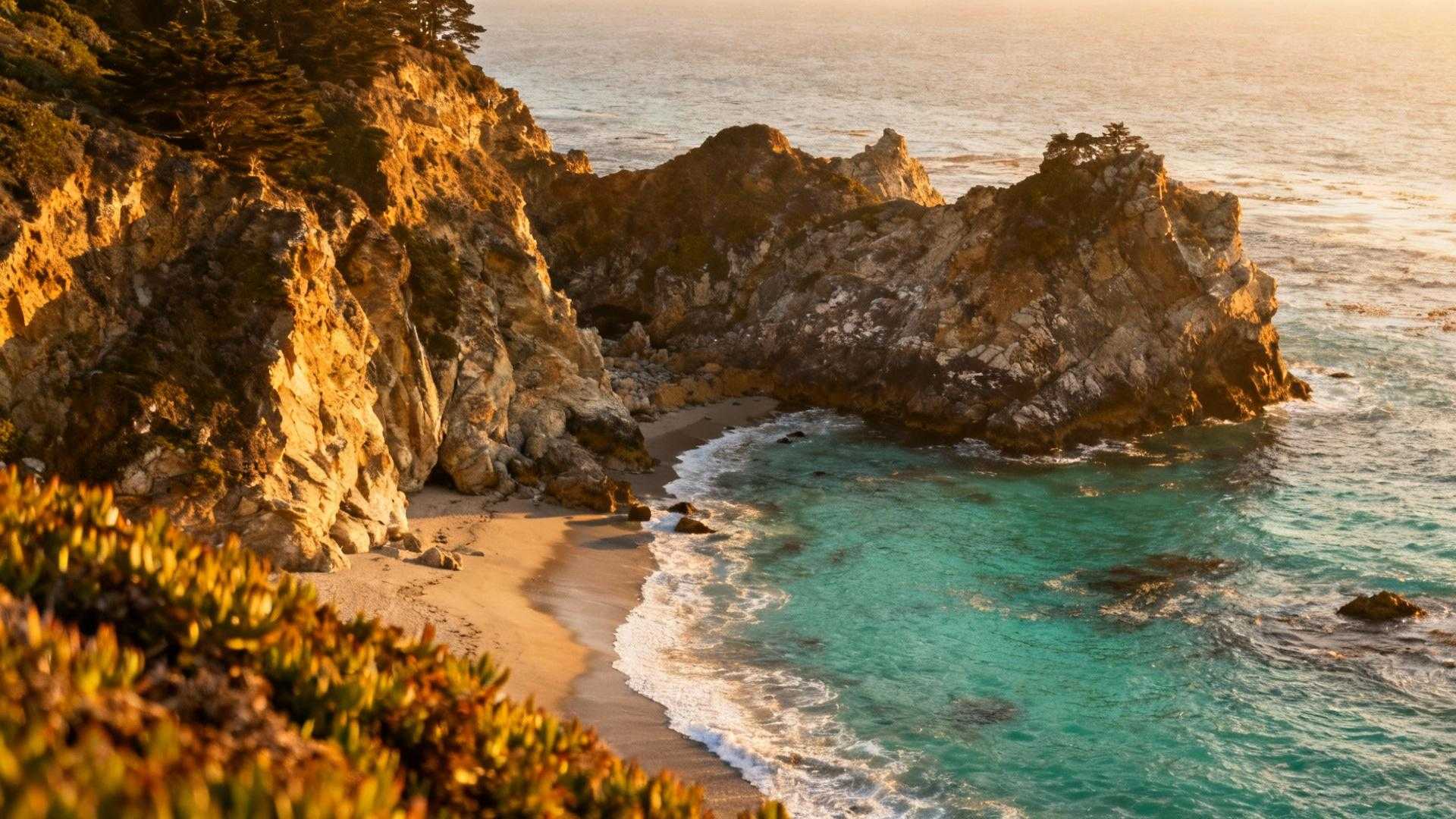Hidden along California’s Palos Verdes Peninsula lies a 399-acre coastal preserve that residents actively protect from Instagram crowds. Portuguese Bend Reserve represents everything locals fear losing to overtourism—pristine tide pools, 19th-century Portuguese whaling caves, and geological wonders accessible only during specific tide windows.
The community’s protective stance isn’t mere selfishness. This fragile ecosystem sits atop an active landslide complex that’s been shifting for over 250,000 years, creating unique pillow lava formations found nowhere else on the peninsula. Local conservation efforts include strategic parking restrictions and seasonal access controls that keep visitor numbers manageable.
What makes Portuguese Bend truly special isn’t just its natural beauty—it’s the delicate balance between sharing California’s geological treasures and preserving them for future generations. Residents understand that some places are too precious to become the next viral destination.
The geological instability that creates magic
Ancient landslides preserve pristine habitats
The Portuguese Bend Landslide Complex moves approximately one foot annually, preventing large-scale development while maintaining the largest intact natural vegetation area on the Palos Verdes Peninsula. This geological activity created unique sea caves and tunnels accessible only during low tide windows, offering experiences impossible at stable coastal locations.
Pillow lava outcrops tell ancient stories
Beneath Portuguese Bend’s surface lie underwater volcanic formations from millions of years ago, now exposed as distinctive pillow lava outcrops. These geological features, combined with the area’s instability, create habitat diversity that supports rare coastal sage scrub and native plant communities thriving nowhere else in urbanized Los Angeles County.
Portuguese whaling heritage locals guard carefully
Hidden maritime history in protected coves
During the 1850s, Azorean Portuguese whalemen established lookout points and processing areas along these cliffs, leaving behind stone foundations and cave modifications still visible today. Local historians work with the Palos Verdes Peninsula Land Conservancy to protect these cultural artifacts from both erosion and tourist damage.
Sea caves reveal whaling station remnants
The tide-dependent sea caves contain remnants of 19th-century whaling operations, including carved stone anchors and shelter modifications. These historical treasures require respectful exploration during specific low tide windows, when knowledgeable locals occasionally share guided access to the most significant sites.
Access challenges that preserve natural beauty
Strategic parking restrictions limit crowds
Rancho Palos Verdes implemented parking restrictions requiring half-mile walks from Crenshaw Boulevard, effectively filtering out casual visitors while maintaining access for dedicated nature enthusiasts. This community-supported measure prevents the overcrowding that has damaged similar California coastal gems throughout Los Angeles County.
Tide-dependent exploration windows
The preserve’s most spectacular features—sea caves, tide pools, and Portuguese Bend Cove Beach—become accessible only during specific low tide periods. This natural timing system prevents continuous tourist pressure while rewarding visitors who plan around lunar cycles rather than convenience.
Conservation efforts that maintain authenticity
Community-led protection initiatives
Local residents voluntarily maintain trail markers, remove invasive species, and monitor wildlife activity through partnerships with conservation organizations. Their protective attitude stems from witnessing how geological instability requires constant vigilance—one careless visitor can trigger erosion affecting the entire ecosystem.
Educational programs over commercial development
Rather than commercializing their geological treasure, residents support Palos Verdes Peninsula Land Conservancy educational programs that teach responsible exploration. This approach mirrors successful conservation models at other protective local communities that prioritize long-term preservation over short-term tourism revenue.
Planning your respectful visit to Portuguese Bend
When to explore tide pools responsibly
October through March offers optimal tide pool conditions with fewer crowds and migrating gray whales visible from clifftop trails. Check tide charts for low tide windows between -0.5 to -1.5 feet, allowing safe access to sea caves and protected marine habitats.
What locals appreciate from visitors
Successful Portuguese Bend exploration requires sturdy hiking shoes, reef-safe sunscreen, and genuine respect for “leave no trace” principles. Local community members notice visitors who follow marked trails, avoid disturbing wildlife, and appreciate the preserve’s geological significance rather than just seeking photo opportunities.
Portuguese Bend Reserve proves that some of California’s most extraordinary places thrive specifically because they’re not easy to reach. The community’s protective approach ensures that future generations can still discover tide pools filled with purple sea urchins, explore caves carved by Portuguese whalemen, and witness geological forces that have shaped this coastline for millennia.
Visit Portuguese Bend with the understanding that you’re entering a living geological laboratory rather than a typical beach destination. Respect the access limitations, follow tide schedules, and appreciate why locals work so hard to keep this unique natural treasure from becoming just another overcrowded Instagram hotspot.
Frequently asked questions about Portuguese Bend Reserve
Why don’t locals want tourists at Portuguese Bend?
Residents protect Portuguese Bend because the active landslide complex creates a fragile ecosystem that requires careful management. Increased foot traffic can trigger erosion, damage rare coastal sage scrub habitat, and compromise the geological formations that make this preserve unique along the Palos Verdes Peninsula.
What’s the best time to visit Portuguese Bend tide pools?
Visit during low tide windows between -0.5 to -1.5 feet, typically occurring early morning or late afternoon. October through March provides optimal conditions with calmer seas and fewer crowds. Check NOAA tide charts and plan for 2-3 hour exploration windows when sea caves become safely accessible.
How do I access Portuguese Bend with parking restrictions?
Park along Crenshaw Boulevard and walk approximately half a mile to preserve entrances. The city implemented these restrictions to manage visitor impact while maintaining public access. Wear comfortable walking shoes and carry water for the approach hike plus your tide pool exploration.
What Portuguese whaling history can I see at the preserve?
Look for carved stone anchors, modified sea caves, and foundation remnants from 1850s Azorean whaling operations. The Palos Verdes Peninsula Land Conservancy occasionally offers guided historical tours highlighting these maritime artifacts. Respect all cultural sites and never remove or disturb historical materials.
